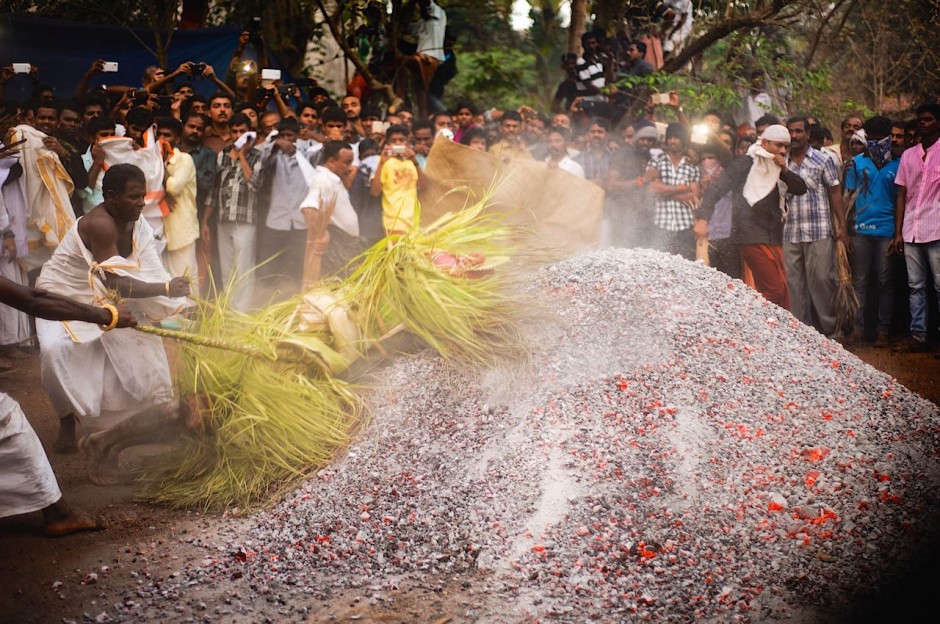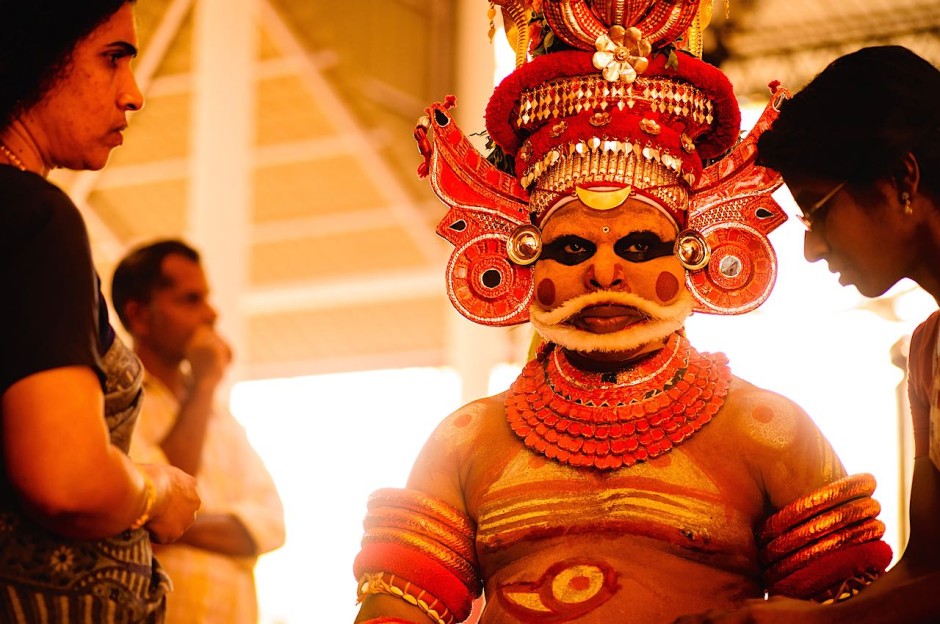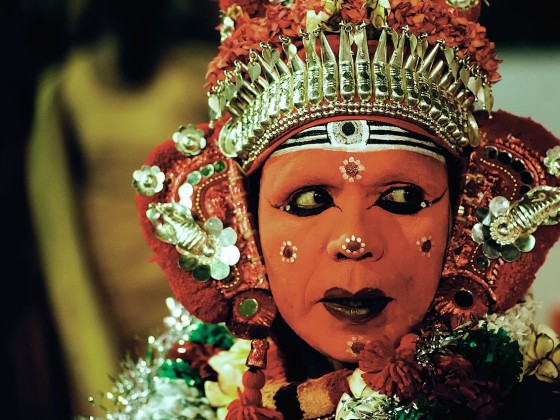Theyyam, the local folk art of North Malabar, had piqued my interest ever since I moved to south India. A mélange of dance, music, face painting, and traditional worship, I took it upon myself to explore these and many other facets of Theyyam this spring. The journey unravelled more than just the art form; it gave me a keyhole view to a small chapter in the lives of the artists themselves. Kannur was the place where one art form, photography, met another, Theyyam.

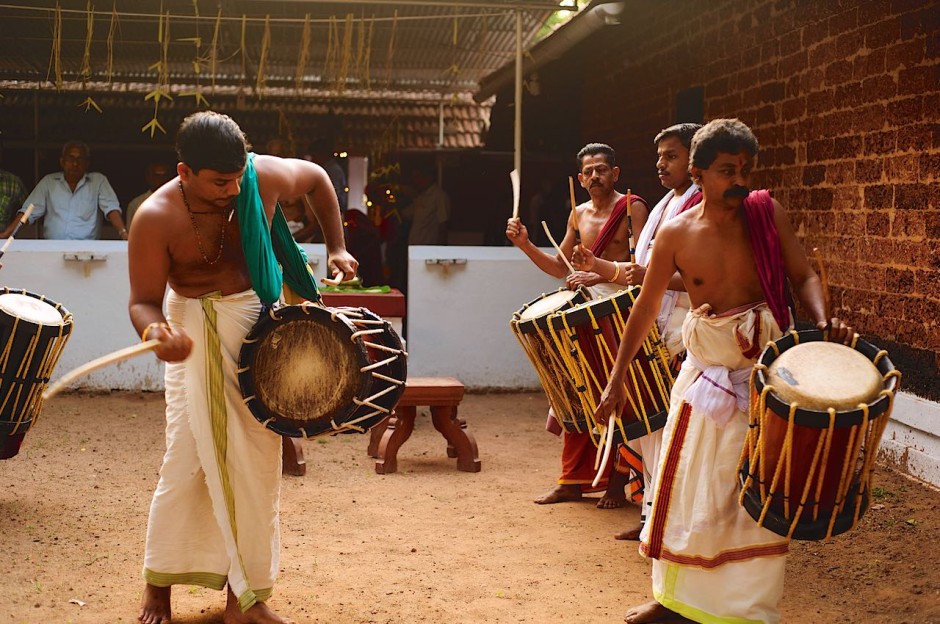
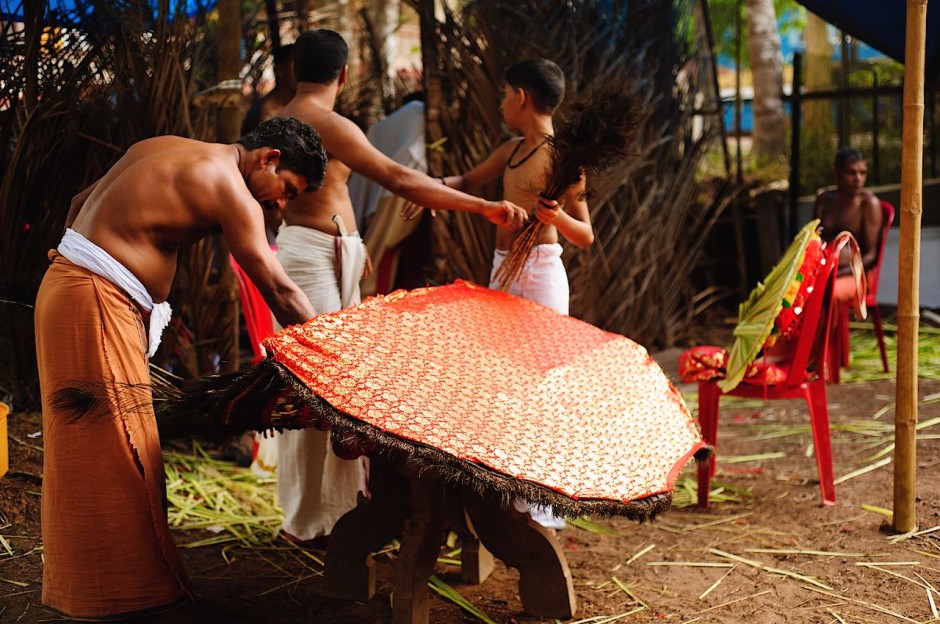
Intermission
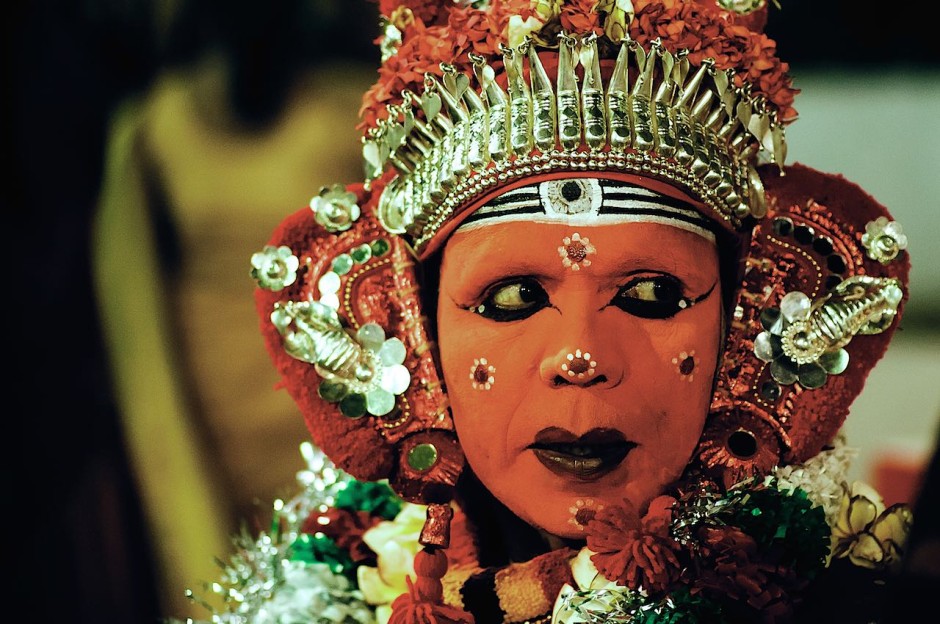


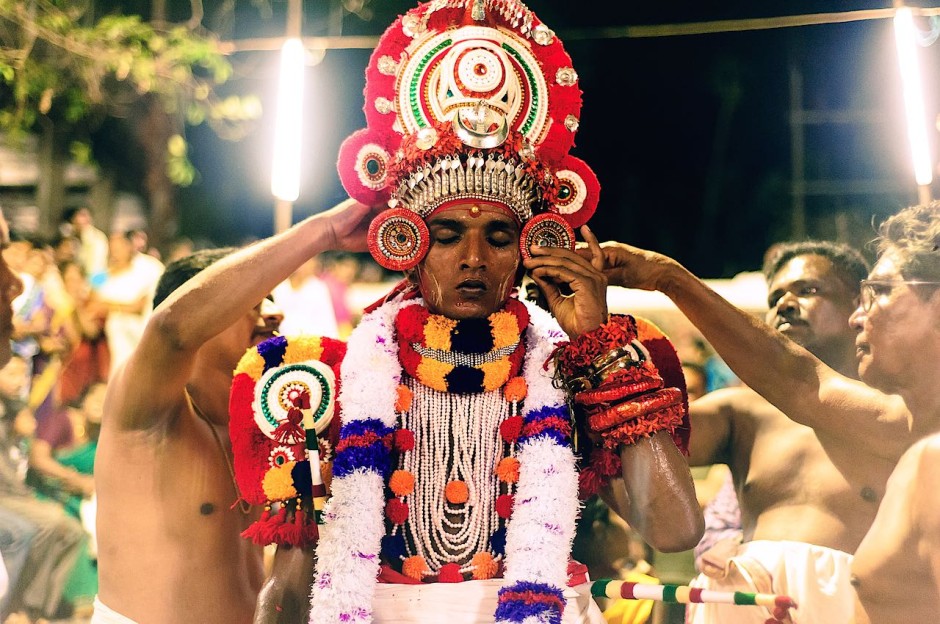
Intermission



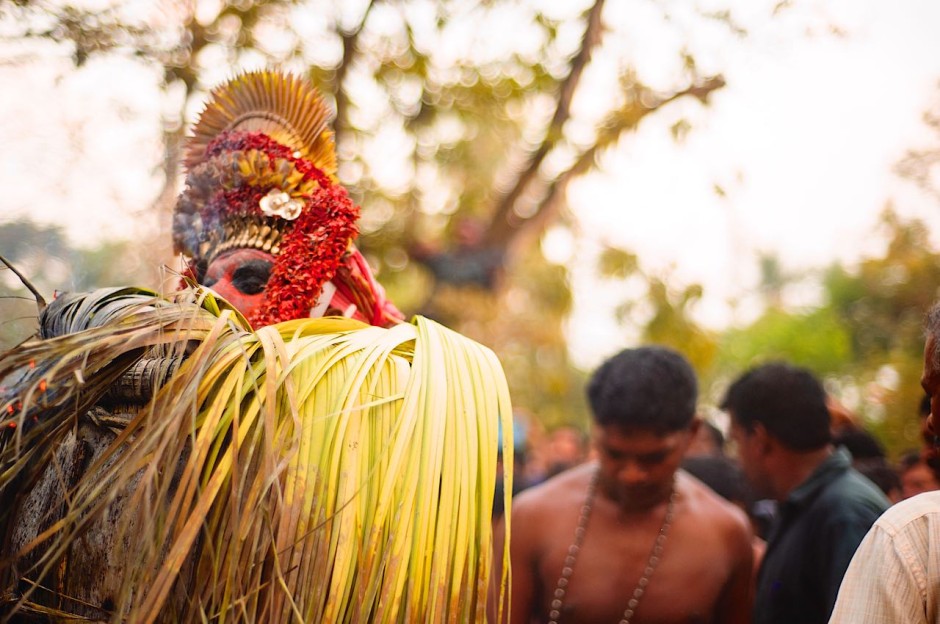
Intermission
